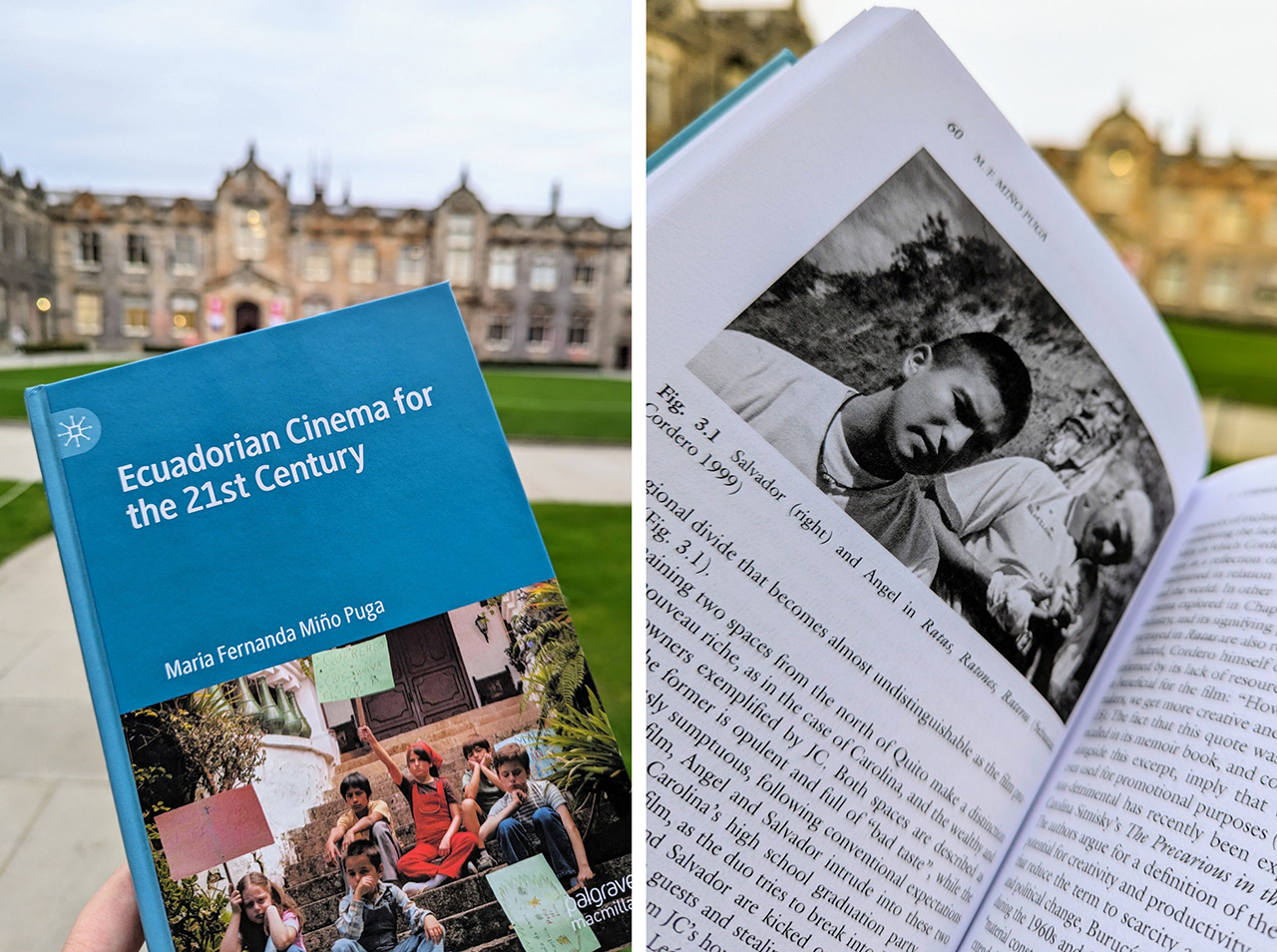“It’s so impressive! The director is surely a cinephile”, expressed Bernard Bentley immediately after the screening of Sebastián Cordero’s Ratas, Ratones, Rateros (Rodents, 1999). This was Bentley’s first encounter with Ecuadorian Cinema, following an extensive research career dedicated to Spanish-language studies, including cinema. The selection of this film could not have served as a more fitting introduction, given its revered status in Ecuadorian film history. But more importantly, a film like Ratas helped paved the way for subsequent efforts towards film legislation in the country, resulting in the 2006 National Film Promotion Law or Ley de cine. It is no surprise, therefore, to include Ratas as a suitable screening for the launching event of my monograph, Ecuadorian Cinema for the 21st century (Palgrave Macmillan UK, 2023), which precisely discusses this period.
Ecuadorian Cinema for the 21st century constitutes the first major publication on Ecuadorian cinema in English. It provides a thorough account of film activities during the new millennium, while also referring to the country’s previous film history. Specifically, the book discusses the so-called “mini boom” in Ecuadorian cinema and its relation to industry structures and film policy in the context of Socialism for the 21st century, the state’s ideology of the time. I argue that the same ruptures, contradictions, and even reversals that we find in Socialism for the 21st century can also be observed in the film output of the time, paradoxically engaging in anti-hegemonic rhetoric while also aspiring to the same value expectations as the neoliberal practices that it criticises. I encapsulate this argument in the chosen title and proposed terminology: Ecuadorian cinema for the 21st century.
The premise of the book already anticipates a much-needed transdisciplinary approach, given its complex subject matter, not to mention its political context. For this purpose, the book is divided into five chapters, complemented by an introduction and final remarks. Each chapter employs specific case studies to dissect local narratives and documentaries, whether state-sponsored or privately funded, with a primary focus on films that premiered in commercial theatres between 2006 and 2016. The book also discusses popular or vernacular cinemas, and films from community groups and Indigenous peoples.
This publication is a direct outcome of my doctoral studies at St. Andrews, within the same department that Bentley helped draft in 2004—the Department of Film Studies. My research received funding from the Ecuadorian National Secretariat of Higher Education, Science, Technology, and Innovation (Senescyt) and benefited from the guidance of Dr. Philippa Lovatt (Film Studies) and Prof. Will Fowler (Modern Languages), my superb supervisors.
Finally, this monograph could not have been possible without the immense and generous contributions from Ecuadorian filmmakers, including Cordero himself, whose latest documentary, Al otro lado de la niebla (Behind the Mist, 2023), intricately reflects on Ratas and his own film journey two decades later.
When informed of Bentley’s reactions to his film via text messaging, Cordero expressed, “How nice that is!”
By Dr Maria Fernanda Miño
- Ratas, Ratones, Rateros (FILM)
- Al otro lado de la niebla (TEASER)

